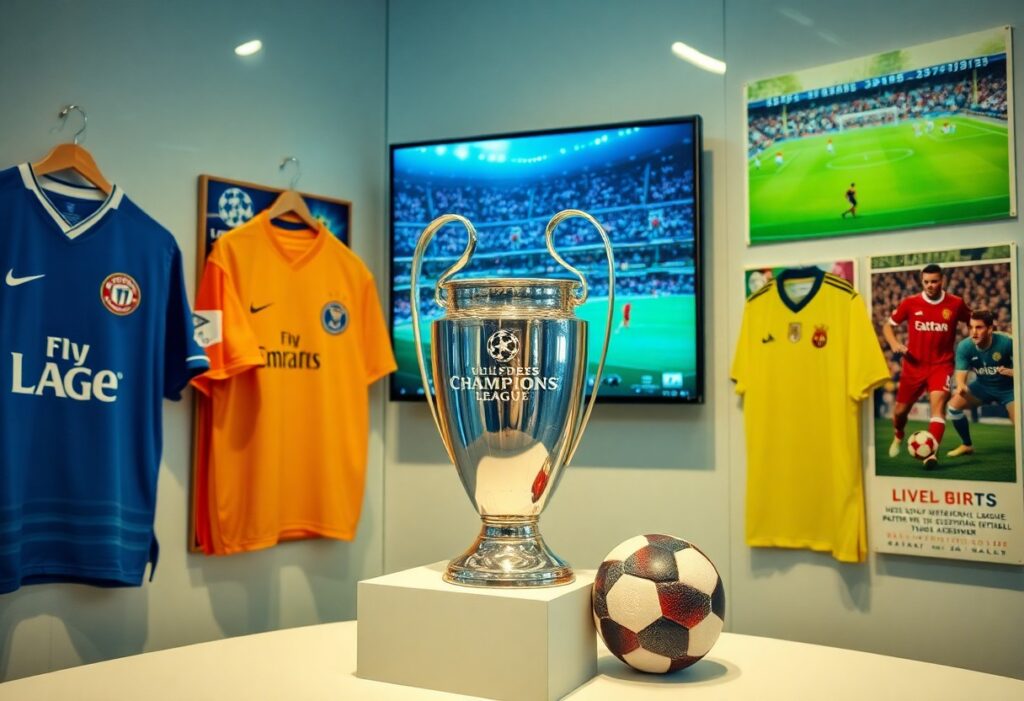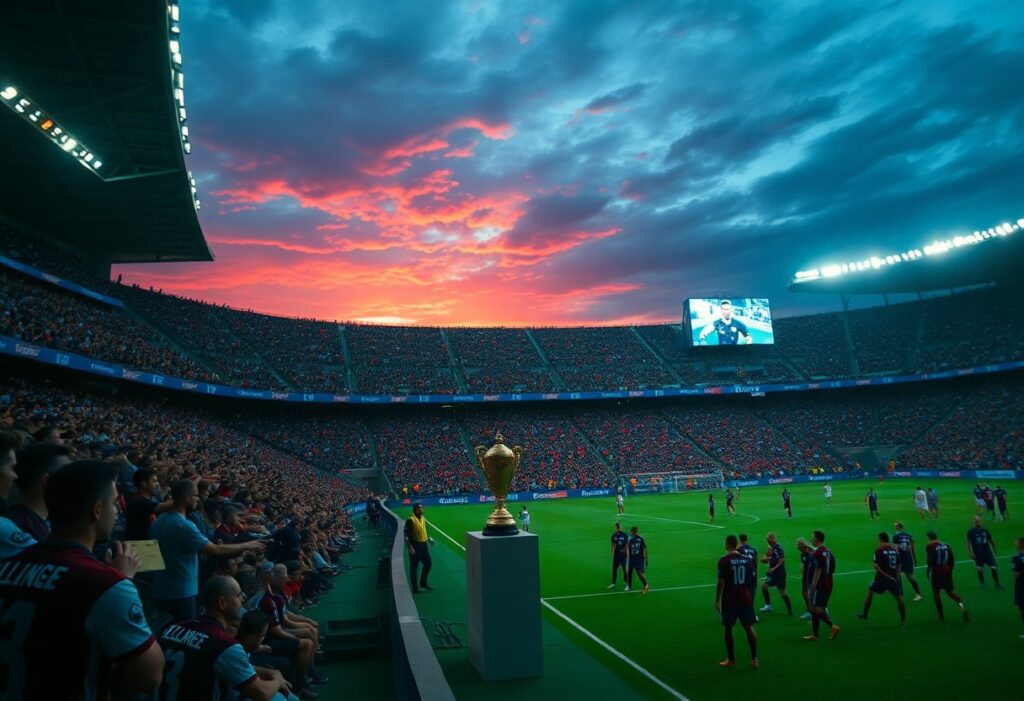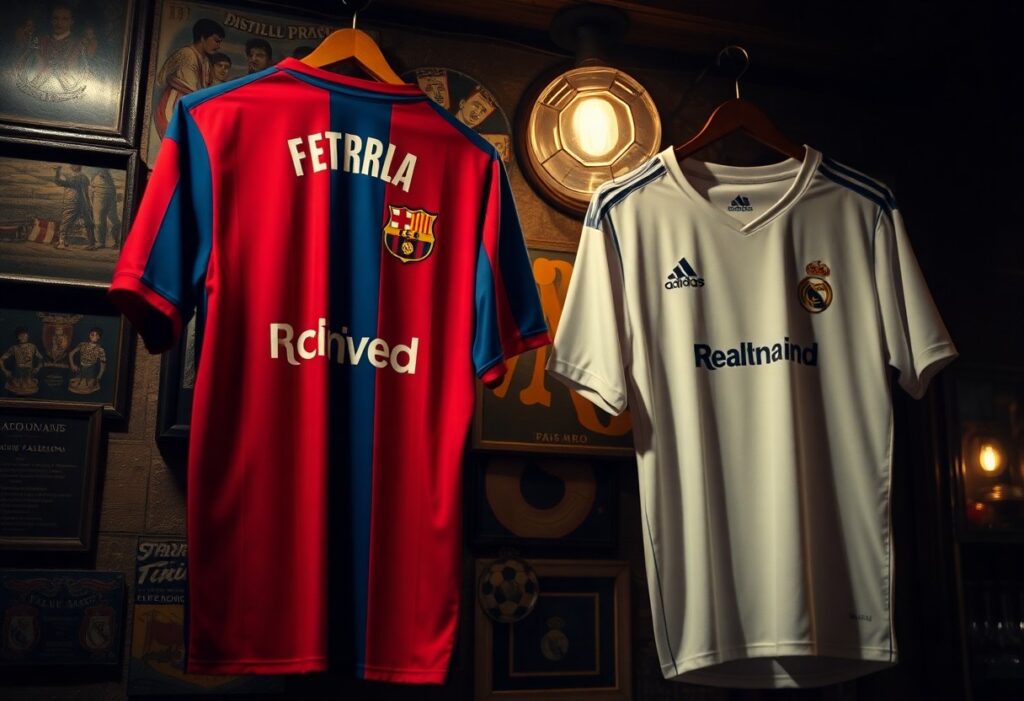
Over the decades, the UEFA Champions League has evolved into the pinnacle of club football, showcasing iconic teams and legendary players. This guide probes into its rich history, the format that shapes the tournament, and unforgettable moments that have defined its legacy. Whether you’re a seasoned fan or a newcomer, this comprehensive resource offers insights into what makes the Champions League truly special.
History of the UEFA Champions League
The UEFA Champions League has evolved into the pinnacle of club football since its inception in 1955. Initially called the European Cup, it was a straightforward knockout competition featuring Europe’s top clubs. With its transformation into the Champions League in 1992, it embraced a league format, significantly enhancing its appeal and competitiveness, culminating in the dramatic and high-stakes matches that fans cherish today.
Origins and Evolution
The competition began in response to a growing desire for elite club competition across Europe, leading to the inaugural tournament in the 1955-56 season. The first champion, Real Madrid, set a precedent by winning the first five titles. Over the decades, the format shifted, introducing group stages and allowing more teams from different countries to participate, reflecting the growing popularity of football.
Milestones and Significant Changes
Notable milestones include the introduction of the group stage in 1991-92, which increased the number of matches and teams involved, expanding to over 70 participants in recent years. The adoption of the seeding system further intensified competition and heightened the prestige associated with the tournament. The introduction of the away goals rule and, more recently, the VAR system have also reshaped how matches are played and officiated.
Significant changes have transformed the Champions League, notably with the introduction of a round-robin group stage in 1991-92, which allowed multiple encounters between top clubs and increased overall viewership. Revisions made in the early 2000s, such as the seeding system, ensured that leading clubs faced lower-ranked opponents early in the tournament. Innovations like the away goals rule and the advent of technology, including VAR, have impacted gameplay and decisions. Financial incentives have also grown, with the competition becoming a lucrative prospect for participating clubs, fostering a more competitive landscape across European football.
Format of the Tournament
The UEFA Champions League is structured in two main phases: the Group Stage and the Knockout Phase. This design allows teams from across Europe to compete at multiple levels, ensuring an exciting tournament format that culminates in a grand final. The tournament features a total of 32 teams in the group stage, which progresses to a higher-stakes knockout format where only the best clubs continue their pursuit of the prestigious trophy.
Group Stage
The Group Stage consists of eight groups of four teams each, with matches played in a round-robin format. Each team faces every other team in their group twice, both home and away. Points are awarded for wins and draws, with the top two teams from each group advancing to the knockout stage. This phase not only tests the depth and consistency of squads but also creates thrilling matchups that often set the tone for the tournament.
Knockout Phase
Following the Group Stage, the Knockout Phase features a two-leg format where teams play home and away matches. Aggregate scores determine who advances, and in the event of a tie, extra time and penalties may be required. 16 teams, including the group winners and runners-up, engage in thrilling matchups, culminating in high-stakes clashes that highlight the intensity and drama of top-tier European football.
In the Knockout Phase, teams must showcase their tactical mastery and composure under pressure. The aggregate format challenges clubs to perform consistently over two legs, with strategies often shifting between matches to exploit the opponent’s weaknesses. Historic rivalries and unexpected upsets frequently emerge, exemplifying the tournament’s unpredictability. Moreover, players often rise to the occasion, creating legendary moments that become etched in Champions League lore, such as last-minute goals or dramatic penalties that decide the fate of clubs.
Types of Teams Competing
The UEFA Champions League is a battleground for various types of clubs, each bringing unique strengths and histories. The competition showcases elite teams from across Europe, including:
- Domestic League Champions
- Runner-ups
- Third and Fourth Placed Teams
- Additional Qualifiers
- Teams from Associations with High UEFA Coefficients
Any team that earns qualification adds value to this prestigious tournament, ensuring a diverse array of styles and strategies.
| Type of Team | Examples |
|---|---|
| Domestic League Champions | Real Madrid, Bayern Munich |
| Runner-ups | Manchester City, Barcelona |
| Third and Fourth Placed Teams | Atletico Madrid, Inter Milan |
| Additional Qualifiers | Porto, Marseille |
| Teams from Associations with High UEFA Coefficients | Ajax, Benfica |
Domestic League Champions
Clubs that claim the title in their respective leagues enter the UEFA Champions League as direct qualifiers. These teams represent the highest level of domestic success, often showcasing a blend of talent and tactical expertise. Strong performers like Real Madrid and Bayern Munich consistently demonstrate their dominance, bringing formidable competition to the tournament.
Runner-ups and Other Qualifiers
Teams finishing in the second position, alongside additional qualifiers from various leagues, enrich the competition’s diversity. These clubs usually include historically significant teams, eager to secure their place and make an impact. They bring not only rivalry but also a rich sporting history, elevating the overall excitement of the tournament.
Runner-ups often exhibit impressive skills, demonstrating that even teams just shy of domestic glory can challenge the best in Europe. Clubs like Manchester City and Barcelona have shown that finishing second in their leagues doesn’t imply a lack of strength. Instead, these teams frequently leverage their experience and past performances, striving to make a deep run in the UEFA Champions League and ultimately claim the coveted trophy. Their presence ensures that the competition remains fierce and unpredictable.
Legendary Moments in Champions League History
Throughout its storied existence, the UEFA Champions League has produced a wealth of legendary moments that define the tournament’s rich tapestry. From last-minute victories to shocking upsets, these memories are treasured by fans and players alike. Each season brings fresh opportunities for teams to carve their names into history, making the competition a rollercoaster of emotion and drama.
Iconic Matches
Some matches in Champions League history remain etched in fans’ memories due to their dramatic twists and turns. The 2005 final between Liverpool and AC Milan, where Liverpool made an incredible comeback from 3-0 down at halftime, exemplifies this. Such moments encapsulate the essence of the tournament, showcasing unparalleled intensity and fervor.
Unforgettable Goals
Goals in the Champions League often transcend the ordinary, becoming emblematic of the tournament’s legacy. From breathtaking long-distance strikes to intricate team plays, certain goals resonate long after the final whistle. They are not just points on a scoreboard; they embody the dreams and aspirations of clubs chasing European glory.
Among the most unforgettable is Zinedine Zidane’s stunning volley in the 2002 final against Bayer Leverkusen, which secured his place in football lore. His left-footed strike from outside the area remains one of the Champions League’s greatest goals, celebrated for its technique and timing. Similarly, Lionel Messi’s solo effort against Manchester United in the 2009 final showcased his dribbling prowess and vision, solidifying his legacy. These goals are more than mere statistics; they represent pivotal moments that can shift the tide of seasons, ignite fan passion, and define careers.
Tips for Fans
Engaging fully with the UEFA Champions League enhances the experience for every fan. Here are some important tips:
- Stay informed about match schedules and results.
- Follow the latest team news and player updates.
- Participate in fan forums and social media discussions.
- Invest in merchandise to show your support.
- Plan viewing parties for key matches.
Perceiving every detail of the tournament can deepen your connection to the teams and the excitement that surrounds each match.
Watching Matches Live
Attending matches live offers an unmatched atmosphere filled with passion and energy. Fans can experience the electric crowd, hear the roars of the supporters, and feel the tension on the pitch. Popular venues often sell out quickly, so purchasing tickets well in advance is advisable. Local matchday traditions, such as pre-game rituals and celebrations, amplify the experience, turning an ordinary soccer match into a memorable event.
Following Teams and Players
Tracking the performance of favorite teams and players adds a personal element to the Champions League experience. This includes monitoring match statistics, player form, and injury reports. Engaging with highlights and analyses helps fans appreciate the intricacies of each match and strategies employed by their beloved teams. Following player transfers and development is equally vital for understanding how a team’s dynamics change season by season.
By diving deeper into teams and players, fans become more invested in their journeys throughout the Champions League. This involves not only watching matches but also consuming content like player interviews, tactical breakdowns, and fan podcasts. Engaging with community discussions and following dedicated sports journalism enhances appreciation for key moments in the tournament, reflecting the evolving storylines that captivate audiences every season.
Factors Influencing Success
Success in the UEFA Champions League results from a combination of various elements. Key factors encompass team strategy, player performance, and club management. These components work synergistically to determine how effectively a team competes. Strong leadership and tactical flexibility often distinguish champions. Dynamics like squad depth and injury management can sway outcomes significantly. Thou art only as strong as your weakest link; thus, unity and cohesion are paramount.
Team Strategy
A winning team strategy is characterized by tactical adaptability and clear communication among players. Coaches devise intricate game plans to exploit opponents’ weaknesses while reinforcing their own strengths. Teams that seamlessly switch formations, such as moving from a 4-3-3 to a 3-5-2, can gain tactical superiority, catching rivals off-guard at critical moments.
Player Performance
Player performance represents a decisive force in the Champions League, where individual brilliance can turn the tide of a match. Exceptional athletes consistently demonstrate high skill levels, stamina, and mental fortitude under pressure. Strength in key matches—like legendary displays from Cristiano Ronaldo or Lionel Messi—often elevates teams to new heights, leading to memorable victories and tournament success.
Analyzing player performance reveals distinct patterns that contribute to success stories in the Champions League. For example, during the 2018-2019 season, Liverpool’s Mohamed Salah showcased remarkable consistency, securing pivotal goals in knockout stages. Similarly, goalkeepers like Manuel Neuer have made vital saves at crucial times, influencing outcomes significantly. In tight matches where every goal matters, standout performances by individual players can be the difference between glory and disappointment.
Pros and Cons of the Tournament
| Pros | Cons |
|---|---|
| Exposes clubs to international competition | Can lead to fixture congestion |
| Significant financial rewards | Increased pressure on players and coaches |
| Global visibility for players and clubs | Risk of one-sided matches in group stages |
| Historical prestige and legacy | Potential for off-field controversies |
| Boosts local and global tourism | Disparities between major and smaller clubs |
Advantages of Participation
Participating in the UEFA Champions League offers clubs remarkable opportunities, including exposure to elite competition and potential financial windfalls. The chance to compete against Europe’s best teams enhances a club’s reputation and can attract top players. Additionally, the tournament generates substantial revenue through broadcasting rights, sponsorships, and increased matchday income, which can be vital for club growth and stability.
Critiques and Challenges
While the UEFA Champions League showcases elite football, it isn’t without its challenges. Concerns arise around fixture congestion affecting player performance and injuries, as clubs balance domestic and European commitments. Furthermore, the tournament’s structure often favors wealthier clubs, leading to a competitive imbalance that undermines the aspirations of smaller teams, reducing the tournament’s overall unpredictability.
The imbalance is particularly pronounced when examining historical trends—since the 2000-01 season, most finalists have been from Europe’s top leagues, with clubs like Real Madrid, Barcelona, and Bayern Munich frequently dominating. This dominance results in predictable knockout stages and diminishes the excitement that underdog teams can bring. Additionally, the intense schedule can fatigue players, impacting their performance in both league and international matches, raising questions about player welfare as clubs strive for success on multiple fronts.
Final Words
Following this comprehensive exploration of the UEFA Champions League, it is evident that this prestigious tournament not only showcases the pinnacle of club football but also serves as a rich tapestry of history, format evolution, and unforgettable moments. The league has continually captivated fans worldwide, solidifying its status as the ultimate proving ground for elite clubs. Understanding its intricacies enhances appreciation for the dramatic narratives that unfold each season. As the competition progresses, the legacy of the Champions League continues to grow, fostering new legends and unforgettable matches.
FAQ
Q: What is the history of the UEFA Champions League?
A: The UEFA Champions League began in 1955 as the European Cup, featuring elite clubs competing for the title. It evolved into its current format in 1992, allowing more teams and introducing a group stage to enhance competition and viewer engagement. Over the years, it has showcased memorable matchups and produced iconic champions.
Q: How does the format of the UEFA Champions League work?
A: The tournament consists of several rounds, starting with a qualification phase, followed by a group stage with 32 teams divided into eight groups. The top two teams from each group advance to the knockout stage, which leads to the final where the champion is determined. The tournament runs annually from September to May.
Q: What are some legendary moments in UEFA Champions League history?
A: Legendary moments include Liverpool’s miraculous comeback against AC Milan in the 2005 final, Manchester United’s last-minute victory against Bayern Munich in 1999, and Chelsea’s triumphant penalty shootout in 2012. These instances not only defined matches but also left lasting legacies in football history.


